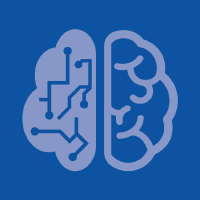Topic Menu
► Topic MenuTopic Editors



Advances in AI-Empowered Beamline Automation and Data Science in Advanced Photon Sources

Topic Information
Dear Colleagues,
Advancements in the instrumentations of advanced photon sources such as synchrotron light sources and X-ray free-electron lasers are unlocking new possibilities to facilitate scientific discoveries. However, they are also imposing a tremendous burden on scientific software in experimental control and data acquisition and analysis, as well as algorithm development for processing big data and the application of AI. The following are examples of advances in AI-empowered beamline automation and data science in advanced photon sources. Image analysis/processing effective AI-empowered image analysis/processing algorithms for better scientific data interpretation, including image denoising and enhancement, image segmentation and correlation and image compression/reduction methods for high-throughput multimodal data. High-throughput acquisition topics relating to large experimental data acquisition capabilities, experimental control and scan mechanism optimization for large scientific datasets, data formats designed for acquired big data and online data reduction methods to ease the burden on transmission, computation and storage ends. Beamline automation AI-assisted techniques to automate pre-experiments as well as experiments, including beam adjustment, sample stage, detector auto-alignment, axis auto-correction, experimental control and data acquisition process automation, such as automatic beam positioning, scanning ROI selection, etc. Scientific software integrating advanced image analysis/processing and data reduction tools with capable data processing and visualization functionalities, preferably forming a unified software framework that covers the whole experimental life cycle. Artificial intelligence and big data AI for the scientific paradigm in beamlines; leading-edge AI computing systems (GPUs) aiming to handle the largest datasets and the most computationally intensive workloads at future beamlines; cloud-based computing nodes that work cooperatively to tackle highly heterogeneous experimental data and high-performance computing infrastructures fully supporting EB-scale big data generation, ingestion, dispatch and storage with regard to future photon sources.
Dr. Yi Zhang
Dr. Xiaogang Yang
Dr. Chunpeng Wang
Dr. Junrong Zhang
Topic Editors
Participating Journals
| Journal Name | Impact Factor | CiteScore | Launched Year | First Decision (median) | APC |
|---|---|---|---|---|---|

Applied Sciences
|
2.7 | 4.5 | 2011 | 16.9 Days | CHF 2400 |

Big Data and Cognitive Computing
|
3.7 | 4.9 | 2017 | 18.2 Days | CHF 1800 |

Photonics
|
2.4 | 2.3 | 2014 | 15.5 Days | CHF 2400 |

Processes
|
3.5 | 4.7 | 2013 | 13.7 Days | CHF 2400 |

Remote Sensing
|
5.0 | 7.9 | 2009 | 23 Days | CHF 2700 |

Automation
|
- | - | 2020 | 26.3 Days | CHF 1000 |

MDPI Topics is cooperating with Preprints.org and has built a direct connection between MDPI journals and Preprints.org. Authors are encouraged to enjoy the benefits by posting a preprint at Preprints.org prior to publication:
- Immediately share your ideas ahead of publication and establish your research priority;
- Protect your idea from being stolen with this time-stamped preprint article;
- Enhance the exposure and impact of your research;
- Receive feedback from your peers in advance;
- Have it indexed in Web of Science (Preprint Citation Index), Google Scholar, Crossref, SHARE, PrePubMed, Scilit and Europe PMC.


